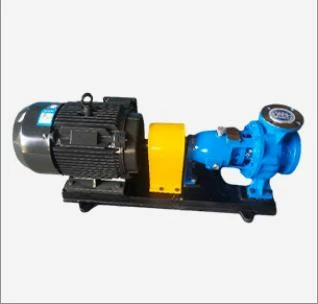English
- Afrikaans
- Albanian
- Amharic
- Arabic
- Armenian
- Azerbaijani
- Basque
- Belarusian
- Bengali
- Bosnian
- Bulgarian
- Catalan
- Cebuano
- Corsican
- Croatian
- Czech
- Danish
- Dutch
- English
- Esperanto
- Estonian
- Finnish
- French
- Frisian
- Galician
- Georgian
- German
- Greek
- Gujarati
- Haitian Creole
- hausa
- hawaiian
- Hebrew
- Hindi
- Miao
- Hungarian
- Icelandic
- igbo
- Indonesian
- irish
- Italian
- Japanese
- Javanese
- Kannada
- kazakh
- Khmer
- Rwandese
- Korean
- Kurdish
- Kyrgyz
- Lao
- Latin
- Latvian
- Lithuanian
- Luxembourgish
- Macedonian
- Malgashi
- Malay
- Malayalam
- Maltese
- Maori
- Marathi
- Mongolian
- Myanmar
- Nepali
- Norwegian
- Norwegian
- Occitan
- Pashto
- Persian
- Polish
- Portuguese
- Punjabi
- Romanian
- Russian
- Samoan
- Scottish Gaelic
- Serbian
- Sesotho
- Shona
- Sindhi
- Sinhala
- Slovak
- Slovenian
- Somali
- Spanish
- Sundanese
- Swahili
- Swedish
- Tagalog
- Tajik
- Tamil
- Tatar
- Telugu
- Thai
- Turkish
- Turkmen
- Ukrainian
- Urdu
- Uighur
- Uzbek
- Vietnamese
- Welsh
- Bantu
- Yiddish
- Yoruba
- Zulu
Telephone: +86 13120555503
Email: frank@cypump.com
Nov . 27, 2024 12:38 Back to list
Specifications and Performance Criteria for Slurry Pumping Equipment and Applications
Understanding Slurry Pump Specifications A Comprehensive Overview
Slurry pumps are specialized machines designed for the transportation of slurries—mixtures of solids and liquids. They are primarily used in industries such as mining, mineral processing, and wastewater treatment, where the efficient and reliable movement of abrasive and viscous mixtures is crucial. Given their importance, understanding the specifications of slurry pumps is essential for selecting the right pump for specific applications.
Key Specifications of Slurry Pumps
1. Pump Type Slurry pumps come in various types, including centrifugal and positive displacement pumps. Centrifugal slurry pumps are widely used due to their efficiency and ability to handle large volumes. They operate by converting rotational energy into hydrodynamic energy, making them suitable for a range of slurry densities and viscosities.
2. Capacity and Flow Rate One of the primary specifications to consider is the pump’s capacity, usually measured in cubic meters per hour (m³/h) or gallons per minute (GPM). Understanding the required flow rate for your application ensures that the pump can handle the volume of slurry effectively without overloading the system.
3. Head (Pressure) The head is the height to which the pump can lift the slurry and is typically measured in meters or feet. A pump’s head specification helps determine its suitability for different applications, as it indicates the pressure that the pump can generate to overcome system resistance and transport the slurry to the desired location.
4. Solids Handling Capability Not all slurry pumps are created equal when it comes to handling solid particles. The size and shape of the solid particles, as well as the total solids concentration, play a critical role in selecting the right pump. Specifications typically include the maximum particle diameter the pump can handle, which is crucial for preventing clogs and ensuring efficient operation.
5. Material of Construction Slurry pumps are exposed to harsh environments, making the choice of materials critical. Common materials include stainless steel, cast iron, and various rubber compounds that can withstand abrasion and corrosion. The material selection often depends on the type of slurry being pumped, as different slurries can have different chemical properties that may affect pump longevity.
slurry pumps specification

6. Suction and Discharge Size The size of the suction and discharge ports is another important specification. It is critical for ensuring compatibility with existing piping systems and for optimizing flow rates. Typically, larger diameters can handle higher flow rates, reducing the risk of blockages.
7. Operating Speed and Power Requirements The operating speed of a slurry pump impacts its efficiency and performance. Most slurry pumps operate at variable speeds, allowing for adjustments based on application demands. Additionally, the power requirements, usually specified in kilowatts (kW) or horsepower (HP), must align with available energy sources to ensure smooth operation.
8. Efficiency Ratings Pump efficiency is crucial for reducing operating costs and energy consumption. Manufacturers often provide efficiency ratings that indicate how effectively the pump converts input power into hydraulic energy. Higher efficiency rates not only save on operational costs but also reduce wear and prolong pump life.
9. Sealing Mechanisms Effective sealing is essential to prevent leaks and ensure operational safety. Slurry pumps can utilize several sealing types, including mechanical seals, packing seals, and gland seals. Each type has its pros and cons, often dependent on the application and specific slurry characteristics.
10. Maintenance and Serviceability The ease of maintenance is a non-technical yet vital consideration. Slurry pumps should be designed for easy access to components for repairs and routine maintenance. A pump that can be serviced quickly can minimize downtime, thereby increasing overall productivity.
Conclusion
Choosing the right slurry pump requires a thorough understanding of various specifications that affect performance, reliability, and cost. By evaluating factors such as pump type, capacity, solid handling characteristics, material construction, and efficiency, operators can make informed decisions that meet their specific requirements. Investing time in understanding these specifications ultimately leads to enhanced operational efficiency, reduced maintenance issues, and prolonged service life of the equipment.
-
ISG Series Vertical Pipeline Pump - Chi Yuan Pumps Co., LTD.|High Efficiency, Energy Saving, Low Noise
NewsJul.30,2025
-
ISG Series Vertical Pipeline Pump- Chi Yuan Pumps|High Efficiency&Low Noise
NewsJul.30,2025
-
ISG Series Vertical Pipeline Pump-Chi Yuan Pumps Co., LTD.|High Efficiency&Energy Conservation
NewsJul.30,2025
-
ISG Series Vertical Pipeline Pump - Chi Yuan Pumps Co., LTD.|Advanced Hydraulic Design&Energy-Efficient Solutions
NewsJul.30,2025
-
ISG Series Vertical Pipeline Pump - Chi Yuan Pumps Co., LTD.
NewsJul.30,2025
-
ISG Series Vertical Pipeline Pump - Chi Yuan Pumps Co., LTD.|energy-efficient fluid handling&industrial durability
NewsJul.30,2025










